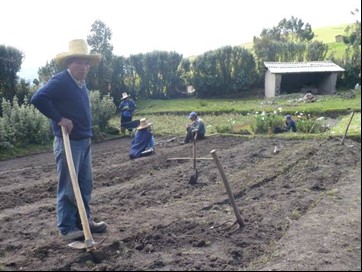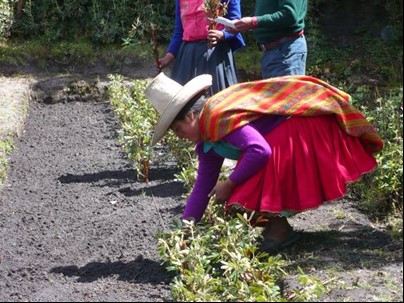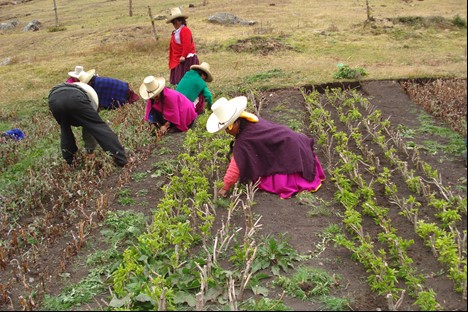



The objective of implementing native plant nurseries is to promote forest plantations in thickets and/or agroforestry, which contribute to carbon sequestration, do not degrade the soil and do not consume much water as eucalyptus or pine. This will contribute to water regulation and protect the soil from erosion. In turn, these species have economic value and are of practical use to the community because they are an important source of wood for carpentry, construction, firewood and charcoal, as well as being melliferous (used by bees to produce honey), medicinal (they cure various diseases, such as digestive, respiratory, renal, etc.) and useful for dyeing fabrics (they give different colors). In addition, Polylepis forests are in danger of extinction and currently form relict forests in patches. Thus, the community plants to produce trees and shrubs; they know and practice good management and value the importance of Jalca's native trees and shrubs. The process goes from the collection of vegetative material for propagation to the planting of the seedlings produced in the selected sites. They are implemented by combining traditional and technical knowledge and with communal work such as mingas.
- Local prioritization. This is an integrated conservation and development project identified and prioritized in the MTP.
- Collective work. It brings together and integrates the community, with activities developed by women (young people), such as nursery cuttings management techniques. In general, everyone contributes with their labor and the support of the community.
- Participatory decision-making. The decision of the areas to be afforested or reforested, whether it is in clumps or in agroforestry, or the plants that will be distributed, requires a communal agreement.
- The high capacity of Polylepis forests to store carbon, as well as their vulnerability and endemism, makes them attractive for forest conservation projects, such as REDD projects, and generates massive interest in presenting proposals at higher levels (local, regional). On the other hand, there is a need to find substitutes for the firewood and charcoal extracted from them.
- Research is needed on carbon sequestration in the case of native soils and grasslands in the high Andean zones, where Polylepis forests are located. Protection activities are necessary in order not to lose this capacity.
- The Queñual has an 80% yield, for which in the first months of propagation it should not lack irrigation; the elder has a yield of 90%, which indicates its great capacity for vegetative reproduction.
- The projects/activities in the area, which were remunerated and provided the peasant family with an economic income, conditioned the minga work to limited days and restricted participation.